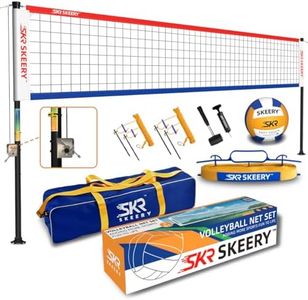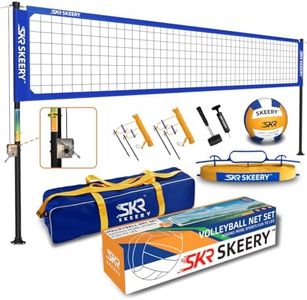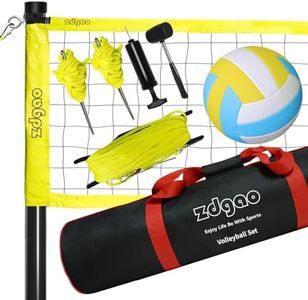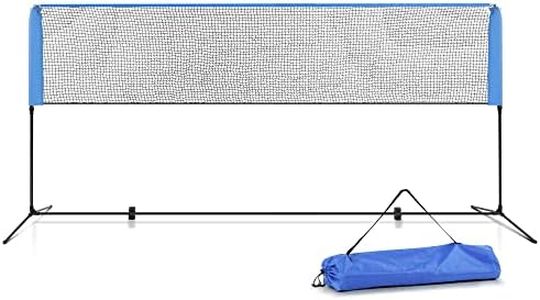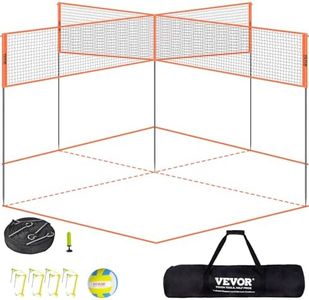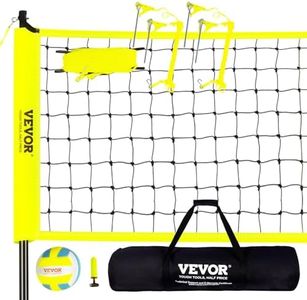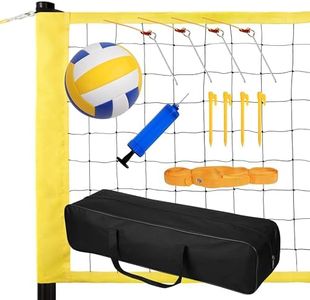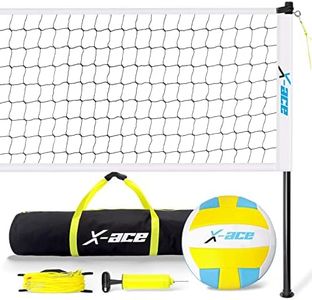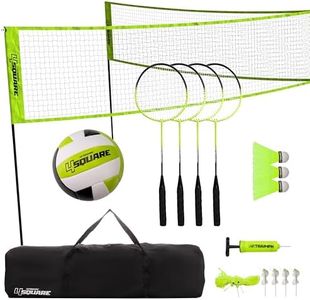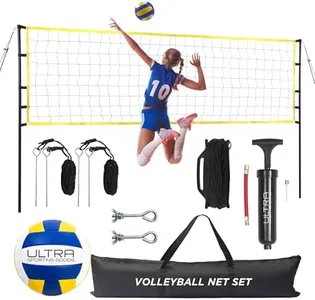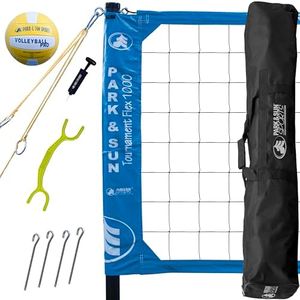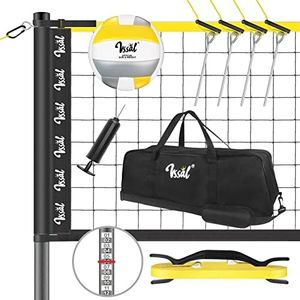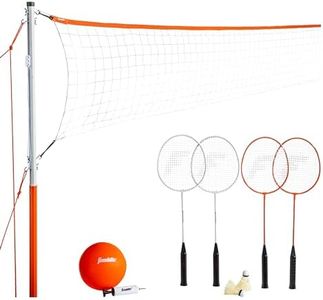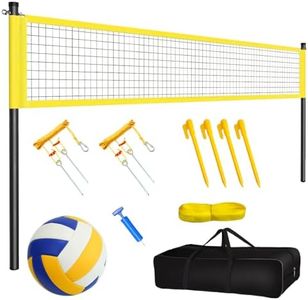We Use CookiesWe use cookies to enhance the security, performance,
functionality and for analytical and promotional activities. By continuing to browse this site you
are agreeing to our privacy policy
10 Best Portable Volleyball Nets
From leading brands and best sellers available on the web.Buying Guide for the Best Portable Volleyball Nets
Choosing a portable volleyball net can be a fun but sometimes confusing task because there are many types and features to consider. The right net depends on where you plan to use it, how often you’ll set it up, and who will be playing. Whether you want it for casual backyard games, beach outings, or more serious practices, understanding the main factors can help you select a net that fits your needs and lasts well.PortabilityPortability refers to how easy it is to carry and set up the volleyball net. This is important because a net that is difficult to pack and transport can be a hassle, especially if you want to use it in different locations. Portability depends on the net’s weight, whether the frame comes apart or folds, and if it comes with a carrying bag. Lighter and more compact designs are easier to take to the park or beach, while heavier options are better for more permanent setups. Choose a net based on how far and often you plan to move it.
Net and Pole MaterialThe materials used for both the net and poles affect durability, weather resistance, and weight. Nets are typically made from nylon or polyester, while poles can be aluminum, steel, or plastic. Nylon and polyester nets are both strong, but polyester handles sun and moisture better. Steel poles are sturdy and suited for rough use yet heavier, while aluminum is lighter and still strong. Plastic poles are the lightest but may not last as long. Pick the materials depending on whether you want something to easily carry or something that can handle tough outdoor conditions.
AdjustabilityAdjustability means how much you can change the height or width of the net, which is important if different groups will play, like adults and children, or if you want to switch between beach and standard volleyball. Some nets have fixed heights, while others let you adjust for various game types or age groups. If you’ll only play casual games with friends of similar ages, fixed options work fine, but if you anticipate varying needs, look for a net with adjustable features.
Set-Up SystemThe way a volleyball net is set up affects how quickly you can get playing and how stable the net will be during games. Some systems use simple telescopic poles that snap together, while others may need rope and stakes for tying the net securely. Quick set-up systems are great for short games and portability, but may not be as steady in windy conditions. If you value convenience more, look for fast assembly; but if stability and tension are more important, pay attention to how the net is anchored.
Net Size and MeshNet size refers to the length and height of the net, and mesh is about the thickness and tightness of the netting. Standard volleyball nets are about 32 feet long and 3 feet high, but smaller or adjustable ones exist for home and recreational play. The mesh should be tight enough so the ball does not pass through and sturdy enough to handle impact. Consider the size based on the space you have to play and the seriousness of your games; regulation sizes are best for official play, while smaller ones are easier to set up in limited spaces.
Stakes and StabilityStakes and stability are about how well the net stays in place while playing, especially outdoors where wind or uneven ground can move things around. Some nets use heavy-duty stakes, guy lines, or even weighted bases. Sturdier, deeper stakes are important on beaches or grass, while lighter supports work for casual indoor or backyard use. Choose the type of stability depending on where and how you play—more rugged environments need solid, reliable anchors.
